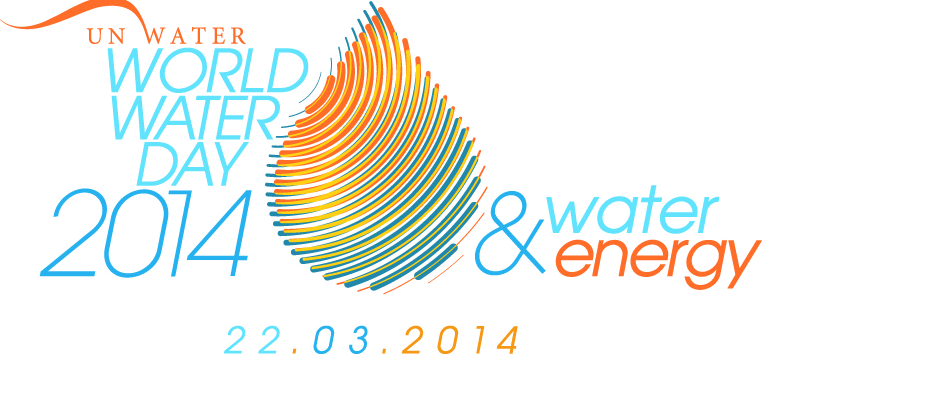

16 January 2014. Zaragoza, Spain – World Water Day, which is celebrated annually on 22 March, is this year dedicated to the theme ‘Water and Energy.’ In preparation for the event, 9 UN agencies and programmes plus more than 120 experts, representatives of international companies in the water and energy sector, government and non-governmental organizations met from 13 to 16 January in Zaragoza, Spain, to address the challenges, relationships and joint solutions that arise in ensuring access, efficiency and sustainability in the provision of water and energy.
Water demand could exceed 44% of the available annual resources by 2050 while energy demand could experience a 50% increase by the same date. As a consequence, the World faces a genuine challenge, without energy there is no water and without water, there is no energy. We cannot afford energy policies that do not take into account the fact that water is needed to produce hydroelectricity as well as cooling in the manufacturing of power generation. Similarly, we must rethink water policies that do not consider how much they need energy to pump, purify, transport, pressurize and clean water.
Avina has discovered vast amounts of social mobilization among citizen initiatives that have the potential to help close the gap in access to water and sanitation services that still affects more than 40 million people in Latin America. These valuable community efforts not only provide access to water, but also strengthen participatory democracy, yet they receive scant attention from governments and aid organizations and are often invisible to society at large.
For their part, representatives of water companies have emphasized that “Without energy you cannot do anything when it comes to water management.” Water is heavy, so a lot of energy for transportation is needed, but this energy is still too expensive. For a water utility, 30% of its operational cost is represented by the cost of energy needed to manage water. It’s clear that water poverty and energy poverty go hand in hand, so there must be social policies that consider both water and energy if these policies are intended to be inclusive. It is possible to meet these challenges using an integrated approach.
Considering that both water and energy are closely related, the solutions must be too. “Saving water is saving energy and vice versa,” participants stressed during the conference. In order to build a sustainable future in this sense, “We all have a role to play”, participants highlighted. There have also been various technological innovations on dry and hybrid power generation cooling, or the use of a combination with renewable energy to ensure these are always available when needed in water management.
Avina and a growing number of allies work to bring together, strengthen and showcase community providers of clean water. Social organizations, businesses and governments have joined the effort, as have hundreds of local allies and thousands of community organizations across the region, including the recently created Confederacion Latinoamericana de Organizaciones Comunitarias de Servicios de Agua y Saneamiento (Latin American Confederation of Community Organizations for Water and Sanitation Services), or CLOCSAS.
For their development and implementation, partnerships are essential as far as water and energy are concerned; not only to improve coordination of public policies in the two fields, but also in many other key areas. However, although progress has been made, there is still some way to go. Both sectors are still working separately, but there is increasing awareness they must work in a more integrated way to make the water-energy nexus a reality. The asymmetries between the water sector and the energy sector seem to be impeding the creation of effective and fair partnerships. Also, the language and concepts used by water and energy experts are very different, which makes communication and mutual understanding difficult. Building partnerships takes time.
“Partnerships are a marathon, not a sprint,” remarked Josefina Maestu, director of the United Nations Office to Support the International Decade for Action “Water for Life” 2005- 2015 “but in today’s World, cooperation and partnerships are a necessity we cannot ignore.” Participants shared and learned from different partnership initiatives such as EDF’s partnership initiative with the European Union and UNIDO’s protocol to ensure that industries improve their manufacturing process.
Avina and its allies sought to set the stage for a new energy governance that allows different players to participate in planning and decision-making in the sector, guaranteeing equal voice and facilitating a long term vision for a more sustainable, safe and inclusive grid. In this context there are three main areas of action:
Create a transparent and public debate about the long term vision for energy and generate conditions in the sector for more sustainable policy decisions.
Strengthen energy security and diversification of the matrix based on incorporating renewable energy sources into the grid and increasing energy efficiency.
Promote universal access to high quality, clean energy.
In reflection of the initiatives discussed the participants concluded that we must take into account the relationship between water and energy depends heavily on the context, there is no ‘one fits all’ solution, hence the importance of partnerships at the local level. Local knowledge is essential to addressing the problems that arise and it becomes one of the critical factors in success. The conclusions of the conference will serve as a basis for developing the key messages to be used in the campaign of World Water Day this year.
Presentations and the final report with conclusions from the conference will soon be available online at: http://www.un.org/waterforlifedecade/water_and_energy_2014
– See more at: http://www.avina.net/eng/5116/2-billion-more-people-will-need-access-to-water-and-energy-by-2050/#sthash.uJqvsECy.dpuf
 View Map
View Map